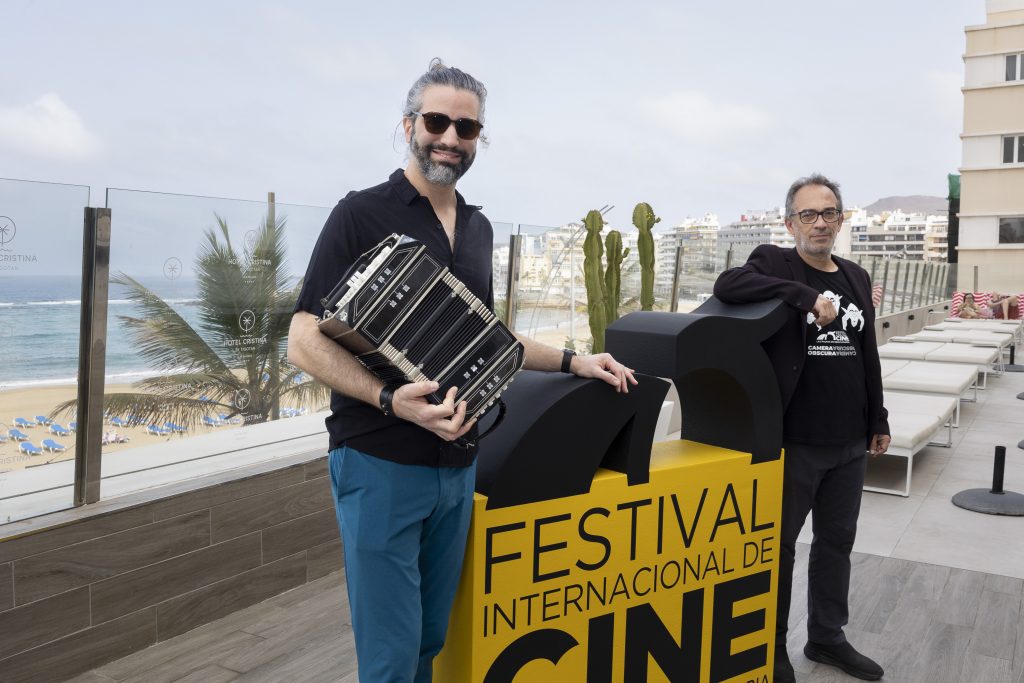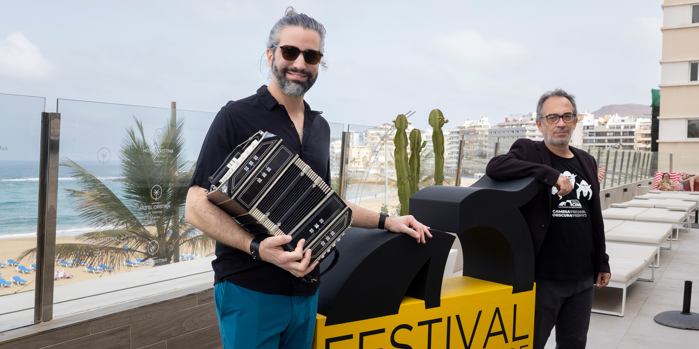Jean Epstein’s masterpiece will open this Friday, April 14, starting at 9:00 p.m., the cycle of silent film screenings held for the third year in a row at the cultural hall of Santa Catalina Park within the Camera Obscura section
Tickets to attend the opening ceremony starring prestigious Argentinean bandoneon player Santiago Cimadevilla are sold out

Las Palmas de Gran Canaria, Wednesday, April 12, 2023.- It took Jean Epstein just one night to write the script for his third film, a love drama set in Marseille that, despite not becoming a box-office success at the time, managed to go down in history as one of French avant-garde cinema’s referential titles. One hundred years after its first screening, the Las Palmas de Gran Canaria International Film Festival (FICLPGC) is bringing back Cœur fidèle (The Faithful Heart, France, 1923, 87 min.) to open its 22nd edition with live music by Argentine bandoneon player Santiago Cimadevilla and the Camera Obscura Ensemble.
Starting at 9:00 p.m. next Friday, April 14, the copy restored by the Jérôme Seydoux-Pathé Foundation will be screened onto Miller Cultural Hall’s silver screen. It’ll be the first screening of Camera Obscura, the silent film section with live music that, as the Festival director, Luis Miranda, recalled, celebrates three years on the FICLPGC programming.
Tickets to attend the opening of the 22nd film festival are sold out. However, there are still seats available for the following screenings of the section scheduled for April 15 and 19, respectively: Safety Last! (USA, 1923, 80 min.), by Fred C. Newmeyer and Sam Taylor; Entr’acte by René Clair (France, 1924, 25 min.) and La souriante Madame Beudet (The Smiling Madame Beudet, France, 1923, 38 min.), directed by Germaine Dulac. Tickets can be purchased at a price of 4 euros on lpafilmfestival.com and entrees.es.
Just like in last edition, Camera Obscura will open a busy schedule of screenings with the revival of one of last century’s early great masterpieces. And, despite not having obtained the audience’s support when it premiered, its innovative character in terms of the use of close-ups, among other features, have consolidated Cœur fidèle as one of French avant-garde cinema’s referential films.
It was one of the first films shot in Marseille, a city in whose depths he delved to narrate the intricacies of a love triangle formed by an unfortunate orphan named Marie (Gina Manés), a dock worker named Jean (Léon Mathot) and a brawling bum nicknamed Petit Paul (Edmund Van Daële). It took Epstein one night to write the screenplay for what was his third and first solo dramatic-style film.
The French director of Polish origin started directing his own films in 1922. He did so as an established film critic who, curiously, began his career as Auguste Lumière’s secretary and translator. Another significant person in the film industry, Luis Buñuel, was also linked to the filmmaker, with whom the Spaniard collaborated in productions such as Mauprat (1926) and La chute de la maison Usher (The Fall of the House of Usher, 1928).
Nearly forty works make up Jean Epstein’s audiovisual legacy, which will be very present at the Las Palmas de Gran Canaria International Film Festival with Cœur fidèle. The copy restored by the Jérôme Seydoux-Pathé Foundation will be screened next Friday with the original music composed for the occasion by Argentinean bandoneon player Santiago Cimadevilla, who will be accompanied in the cultural hall of Santa Catalina Park by the Camera Obscura Ensemble.
Cimadevilla’s piece is inspired by Argentinean bandoneon players Dino Saluzzi and Astor Piazzolla’s legacy. The original music composed for the presentation addresses “numerous universal themes found in many other great port cities,” the FICLPGC catalog notes. “To my surprise, the film, although set in Marseille, could easily have been made at the same time in Buenos Aires, right when tango was being developed and which was also a port city with a very similar aesthetic,” the musician revealed before also pointing out that in the 1920s the bandoneon was “incredibly popular in Germany,” the country where the instrument was created.
According to the aforementioned text, the instrumental line-up chosen for the occasion is inspired by Conjunto 9, one of the ensembles led by the great Astor. “The combination of bandoneon with piano and strings allows for a great variety of sonority, in which you can perceive the joint ensemble in all its acoustic power, but there are also different combinations in duets, trios and even solo instruments, thus allowing the music to support and highlight the development of the plot without distracting from it.”
Camera Obscura Selection
Cœur fidèle / The Faithful Heart, by Jean Epstein (France, 1923, 87 min.)
Safety Last!, by Fred C. Newmeyer and Sam Taylor (USA, 1923, 80 min.)
Entr’acte, by René Clair (France, 1924, 25 min.)
La souriante Madame Beudet / The Smiling Madame Beudet, by Germaine Dulac (France, 1923, 38 min.)
Share this Post

